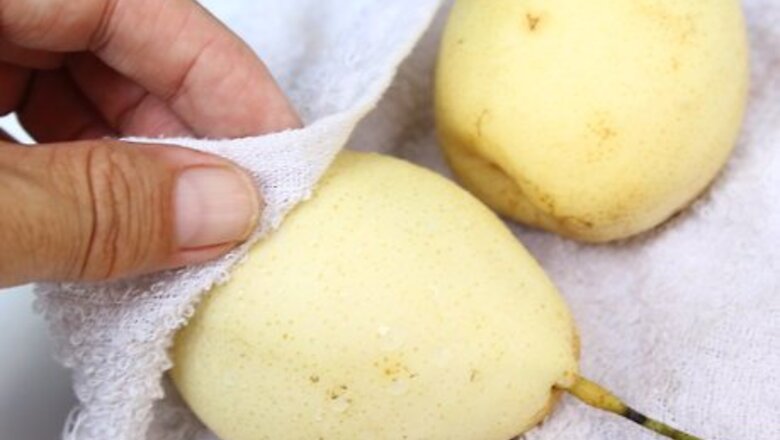
views
Enjoying an Asian Pear on Its Own
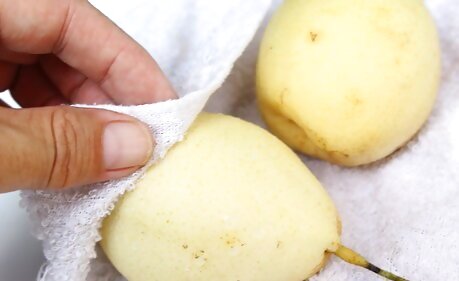
Use either a chilled or room temperature pear. Some people prefer Asian pears chilled, while others think they taste better at room temperature. But there's no wrong choice here—they taste great either way! Asian pears keep much longer in the fridge than on the table—3 months versus 1 week—so it's best to keep them refrigerated. If you like to eat them at room temperature, just let the pear sit on the counter for about an hour before eating it. Rinse the pear and pat it dry with a clean towel before cutting or eating it.
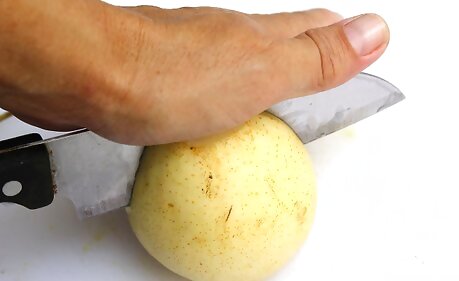
Slice it into quarters with a heavy knife. Use a sharp chef's knife or cleaver to chop straight down through the top of the pear. Then, cut each hemisphere in half to create 4 equal quarters. Asian pears are firm like apples, and most varieties have the same shape as apples, so you can use the same cutting techniques for both. If you prefer to core your apples before cutting them, or if you like to use a dedicated apple corer/slicer gadget, you can do the same with Asian pears.
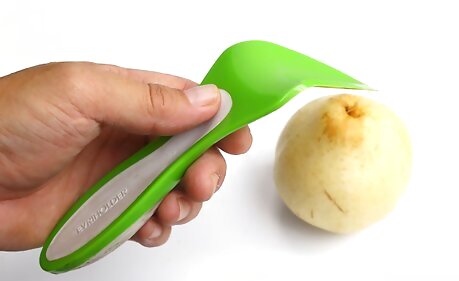
Trim out the core with a paring knife. As with apples, you'll find a tough core with seeds in the middle of Asian pears. Pick up each pear quarter and use a paring knife to carve out and discard the core section. You should be able to see where the harder, drier core ends and the juicier, more delicate fruit begins. You can also feel the difference with your finger in order to help determine your cut.
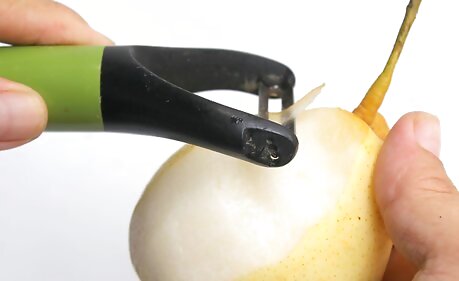
Peel off the skin if desired. The skin of Asian pears is perfectly fine to eat, and eating it means you'll consume even more healthy fiber. However, if you prefer to remove it, just slide your paring knife under the skin and peel it away from each quarter section. Alternatively, you could use a vegetable peeler to remove the skin before you begin cutting into the pear. If you plan on presenting a plate of thin slices of pear to your guests, removing the skin may be more aesthetically pleasing.
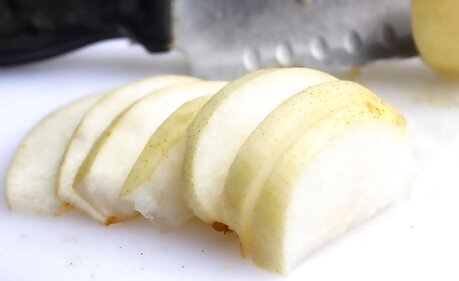
Cut thin slices and serve them immediately. Use your paring knife to cut each quarter into 4 or more thin slices. Asian pears are so crisp that they can be cut into very thin slices with a sharp knife. Asian pear slices usually don't brown as quickly as apples, but they will start to turn soon after you cut them. Browning doesn't affect the flavor, but it does lessen the visual appeal.
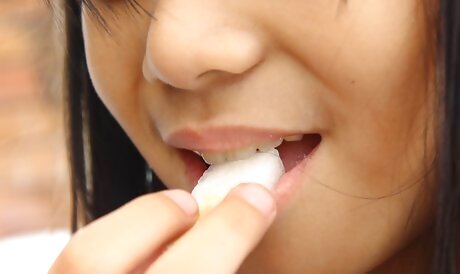
Bite into it just like an apple for a quicker fix. If you're not concerned with fancy presentation, or just want something you can eat while walking to the bus stop, don't worry about cutting the pear. Just rinse and dry the skin, then eat it out-of-hand. An Asian pear makes a great hand fruit—it combines the convenience of an apple with the distinctive sweetness of a pear. No wonder some people call them “apple pears!”
Using Asian Pears in Recipes
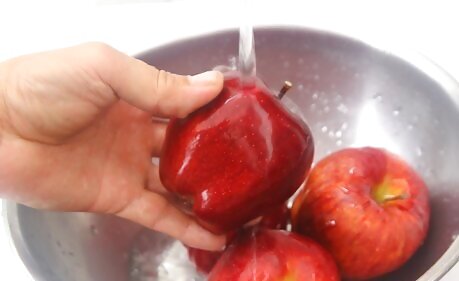
Substitute them for apples in any recipe. Because they are very similar in size, water content, and texture, you can make a 1-to-1 switch in any recipe that calls for sliced, diced, grated, pureed, or cored-and-peeled apples. Depending on the prominence of the apple flavor in the recipe, you may notice a distinctive pear flavor instead. This can make for a great change of pace, although it may not be ideal for every recipe. Try substituting Asian pears for half of the apples in your favorite applesauce recipe!
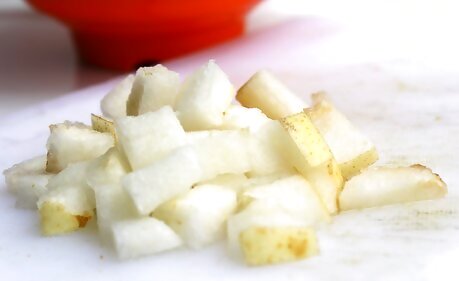
Use peeled slices or cubes in salads. Peeled and thin-sliced Asian pears add a sweet crunch to any lettuce salad. Add them to the top of the salad right before serving it to show off these glistening little wedges! Peeled and cubed Asian pears also make a great choice for fruit salads, since they hold their shape much better than softer pear varieties.
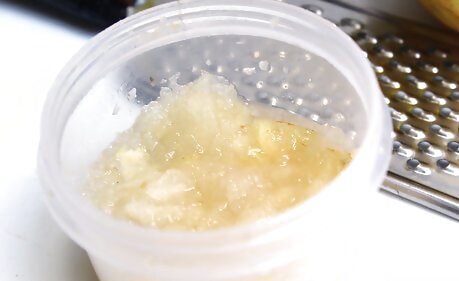
Grate them for use in coleslaw or baked goods. Grated Asian pears can add a unique flavor profile to your favorite coleslaw recipe. They work especially well with Asian-inspired slaws. Or, grate them up and try them in any baking recipe that calls for grated apples, such as cakes or muffins.
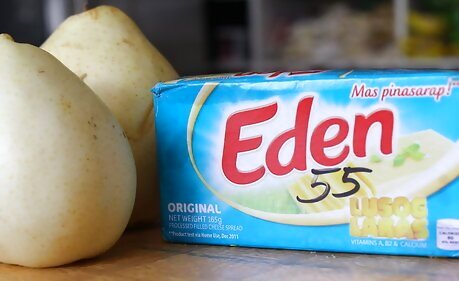
Pair them with cheese or prosciutto for an appetizer. Like apples, Asian pears make a great accompaniment to a wide range of cheeses, depending on your taste preferences. You might try a mild cheddar, for instance, or a crumbly gorgonzola. The mild flavor of the pear suits just about any kind of cheese. Or, for another great appetizer pairing, wrap strips of prosciutto around bite-size cubes of Asian pear, stick a toothpick through them, and place them on a platter.
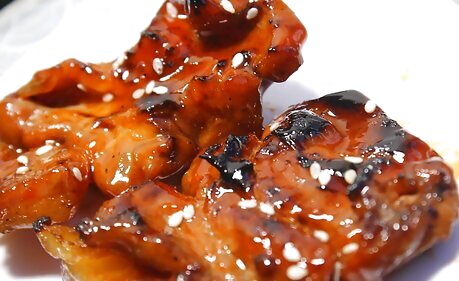
Use them in Korean barbecue recipes. Asian pears are hidden stars in many Korean dishes, especially in the sauces that accompany grilled meats. Many Korean barbecue recipes call for you to grate Asian pear into the marinade and/or finishing sauce. In this case, using Asian pears really does make a difference. Softer pear varieties don't have the right texture, and apples don't provide the same flavor profile.
Choosing and Storing Asian Pears
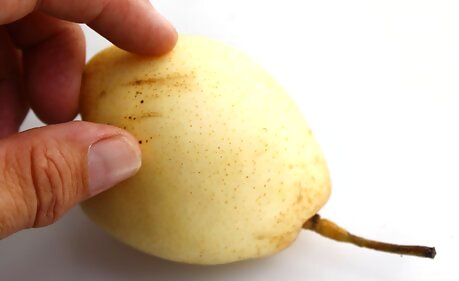
Choose firm fruits without any blemishes. Like their softer pear cousins, Asian pears bruise easily, to the detriment of their texture and flavor. Small blemishes can be cut away when it's time to eat a pear, but it's worth taking the time to pick out unbruised pears when shopping. You may see Asian pears at the supermarket that are individually wrapped in protective mesh “sweaters” to limit bruising. Even so, take a peek underneath to check the skin for blemishes.
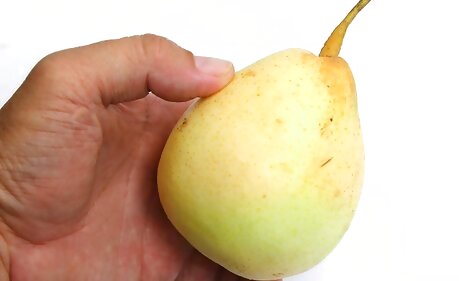
Allow any green tinting to fade for maximum ripeness. Asian pears are best when fully tree-ripened, and you'll often find them ready-to-eat at the store. However, if a yellow or golden brown (russet) pear has a light green tint to it, leave it on your counter, uncovered, for a day or two until the green tint fades. There are, however, some varieties of Asian pear that remain green even when ripe. Look for a faded green rather than a deeper green hue to know when these ones are ready.
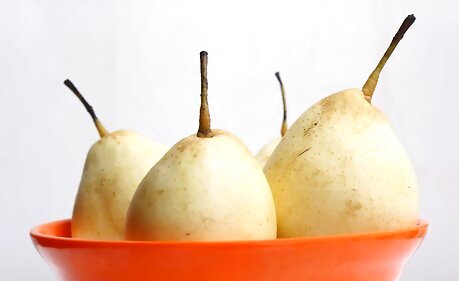
Store them at room temperature for up to a week. Unblemished Asian pears can easily sit in your fruit bowl for 5-7 days without any difference in freshness or flavor. But there's a good chance they won't last that long anyway! Blemishes or bruises will spread fairly rapidly, though, so eat these pears as soon as possible.
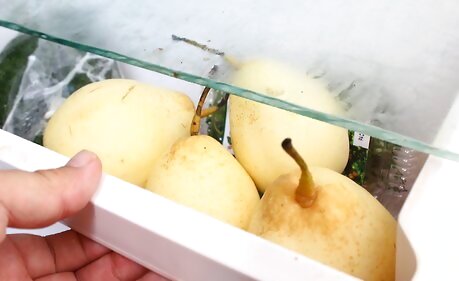
Keep them for up to 3 months in the refrigerator. If you find a good deal and buy Asian pears in bulk, store them in the fridge to keep them fresh for as long as possible. Let them come to room temperature before eating, if that's your preference, or just enjoy them chilled. Bruised or blemished pears will last longer in the fridge than on the counter, but they'll probably go bad before 3 months have passed.
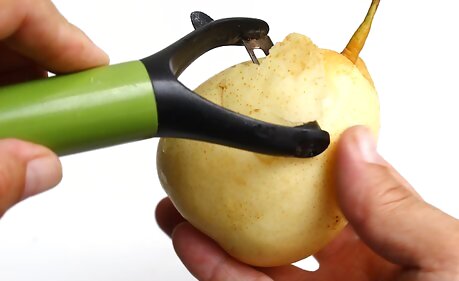
Peel, slice, and freeze pears for long-term storage. If Asian pears are seasonal in your area, but you want them year-round, you can freeze peeled pear slices for up to 6 months. Like most frozen fruits, though, these are best used for cooking or baking, or in smoothies or sauces. For the best results, lay the pear slices on a wax paper-lined baking sheet and freeze them solid. Then, put them in a zip-close freezer bag with the date written on it.


















Comments
0 comment